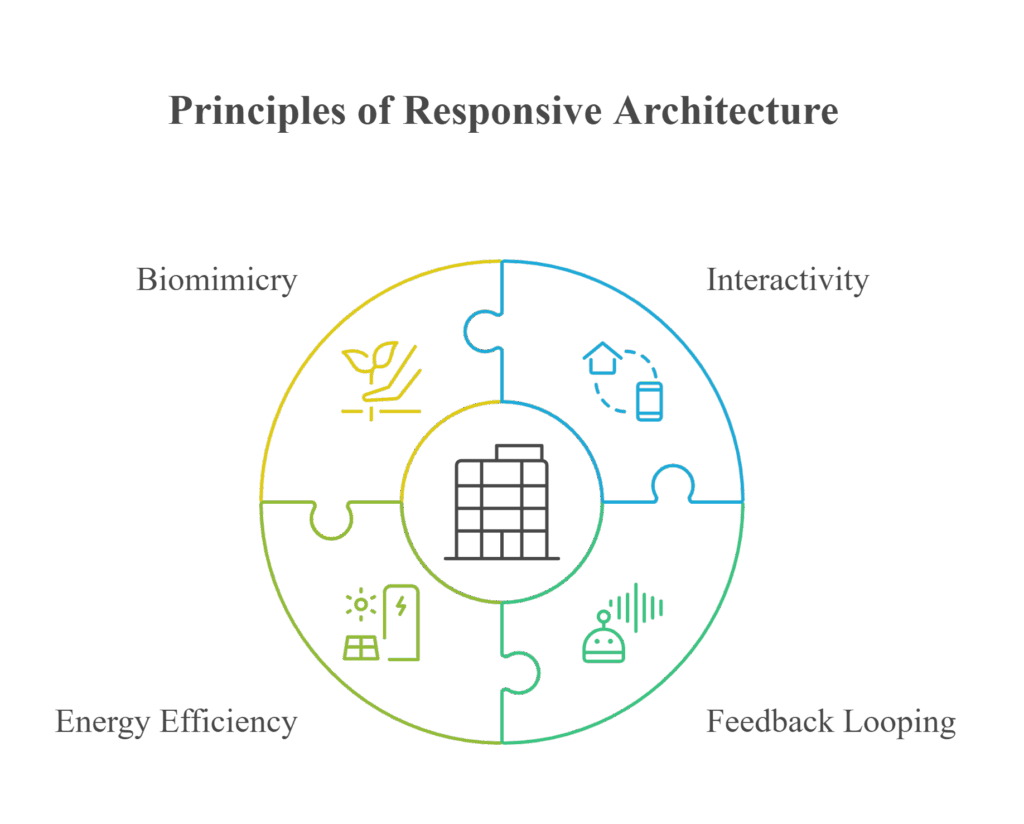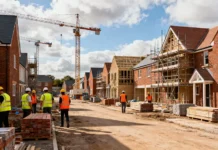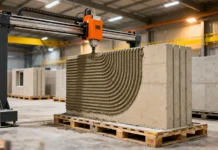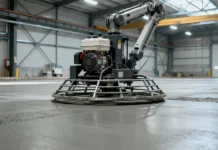The evolution of architecture over the past few decades has been characterised by continuous innovation driven by technological advancements, sustainability imperatives, and the growing demand for flexible, user-centric spaces. Among the most intriguing developments is the advent of responsive architecture, buildings that dynamically adapt their form, function, or appearance based on environmental stimuli and human needs. Central to this evolution is the integration of sensor technology, which enables buildings to sense their surroundings and respond autonomously. This creates spaces that are not only more efficient but also aligned with the natural environment and human comfort.
Responsive architecture represents a paradigm shift from static, fixed structures to living entities capable of evolving in real-time. This approach leverages sensor networks, data analytics, and intelligent systems to optimise energy consumption, enhance occupant comfort, and even extend the lifespan of building components. Responsive architecture transforming construction offers innovative solutions that promise sustainable and resilient development.
Foundations of Responsive Architecture
Responsive architecture is rooted in the convergence of architecture, engineering, computer science, and environmental science. It involves embedding sensor systems within building envelopes, structures, and interior spaces to gather data on environmental parameters such as temperature, humidity, light levels, airflow, and structural integrity.
These sensors feed real-time data into algorithms and control systems, which then modulate various building functions, ventilation, shading, lighting, insulation, and even structural elements. This feedback loop creates a symbiotic relationship between the building and its environment, where form and function are continuously optimised.
The foundation of this technology ecosystem is the Internet of Things (IoT), which facilitates connectivity among sensors, actuators, and central processing units. Advanced data analytics, machine learning, and artificial intelligence further enhance this process by enabling predictive maintenance, energy forecasting, and occupant behavior analysis.
In architecture, design strategies must accommodate sensors and responsive elements without compromising aesthetic appeal or structural integrity. This requires a deep understanding of both the technical aspects and design philosophy. This integrates biology-inspired principles such as feedback mechanisms and self-regulation to create buildings that actively interact with their environment rather than merely exist as static structures.
Design Principles of Responsive Architecture

Designing responsive buildings requires a fundamental shift from traditional static architecture to flexible, adaptable systems that respond to environmental and human cues. Such buildings are often conceptualised as ecosystems, where the architecture is fluid, capable of adjusting its shape, transparency, temperature, and even acoustics in real-time.
One key principle is interactivity. Responsive buildings are not passive entities but interactive spaces that engage occupants and their environment. For example, facade systems equipped with sensors can adjust shading devices based on sunlight intensity, thereby reducing cooling loads and glare. Similarly, interior environments can modify lighting and airflow based on occupancy patterns, enhancing comfort while conserving energy.
Another principle involves feedback looping. Just as biological organisms respond to stimuli with feedback mechanisms, like a plant bending towards sunlight, responsive architecture incorporates sensors and control algorithms that adjust building behavior accordingly. This creates a continuous cycle of sensing, decision-making, and acting, which maximises efficiency and resilience.
Energy efficiency is an important principle. Adaptive shading, ventilation, and lighting reduce dependence on external energy sources and minimise waste. The integration of renewable energy sources with responsive systems further amplifies this effect, resulting in buildings that generate and regulate their own energy requirements dynamically.
Biomimicry also influences design. Nature offers countless examples of systems that self-regulate and adapt. Mimicking these biological processes enables architects to develop buildings with self-healing materials, adaptive skins, and responsive structural components. This helps in extending durability and reducing maintenance costs.
Practical Applications of Responsive Architecture
The primary benefit of responsive architecture lies in dynamic adaptation that enhance occupant comfort, building longevity, and sustainability.
One of the most prominent applications is adaptive facades, exterior surfaces equipped with sensors and actuators that modulate transparency or shading. These facades respond to sunlight, temperature, and wind conditions to optimise daylight penetration and thermal comfort. This significantly helps in reducing energy consumption for heating and cooling.
Interior spaces leveraging responsive architecture include smart HVAC systems that modify airflow and temperature based on occupancy sensors and environmental data. For instance, a conference hall might automatically adjust ventilation rates and lighting levels to match the number of people present, thereby conserving energy when the space is unoccupied.
Valuable insights are gained from sensor data to improve building management and maintenance. Predictive maintenance driven by sensor analytics reduces downtime and repair costs, increasing the life cycle of building components.
In the realm of urban planning, responsive infrastructure can extend beyond buildings. Smart streetlights, traffic systems, and water management networks all benefit from sensor-driven adaptation, contributing to resilient and sustainable cities.
Future Trends in Responsive Architecture
The integration of responsive architecture with emerging technologies is likely to accelerate. The proliferation of AI-powered control systems promises even more refined and predictive responses, where buildings learn and evolve based on occupant behavior and environmental changes.
The development of self-healing materials will further expand possibilities, allowing structures to repair as they respond to wear and tear. Responsive buildings will increasingly be part of larger urban systems, interconnected through IoT networks, forming resilient, adaptive urban ecosystems.
The challenge remains in balancing technological complexity with simplicity of use, ensuring that responsive architecture remains accessible, cost-effective, and visually appealing. As technologies mature and costs decrease, responsive buildings will become commonplace, transforming urban landscapes into living, breathing entities.
Conclusion
Responsive architecture is revolutionising the way we conceive and construct buildings. Moving beyond static shells, these structures are intelligent, adaptable entities that respond to their environment and human needs in real time. The infusion of sensor technology, data analytics, and automation creates a new paradigm, buildings that are efficient, sustainable, and engaging.
The potential benefits are enhanced occupant comfort, significant energy savings, reduced environmental impact, and increased resilience against climate-related challenges. As the world shifts towards smarter, more sustainable cities, responsive architecture will play a pivotal role in shaping the future of urban infrastructure.
From innovative facades to adaptive interiors, the integration of sensors and intelligent systems heralds a new era where buildings are not just static artifacts but dynamic participants in the urban ecosystem. Responsive architecture transforming construction promises a future where our built environment harmoniously coexists with nature and human activity, creating spaces that are truly alive.





























